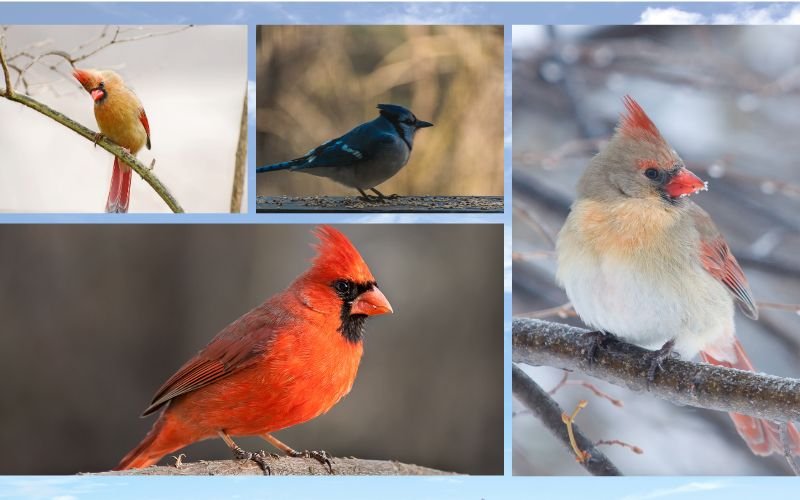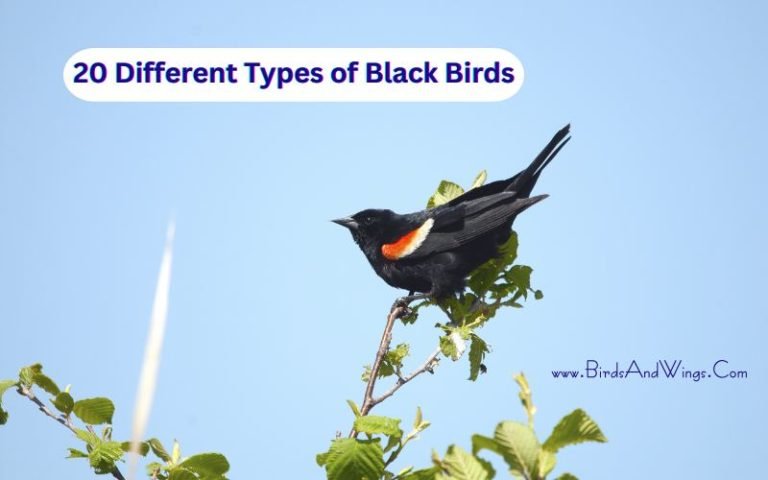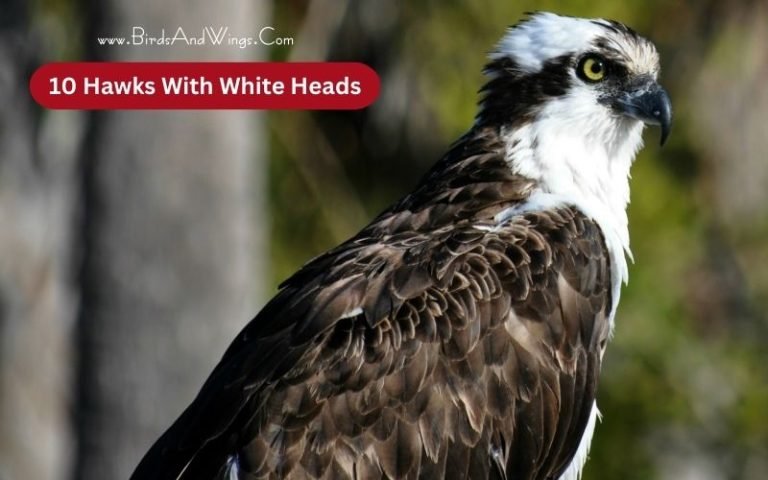11 Amazing White Cardinals
White Cardinals are a very unique and charismatic avian species that amaze humans or any bird enthusiasts.
The white color or feathers appear on their body due to a lack of melanin pigmentation, which is called leucism, where the other color cannot sit on their skin, body, features, or fur.
Ultimately, this partial loss of pigmentation gives them white color over their body, which means they refer to leucistic birds under white cardinal birds.
This article will explore the top 11 white cardinal leucistic birds along with their scientific names, native places, lifespans, wingspans, diets, and other attributes of nature.
11 Amazing White Cardinals
White Cardinal birds also refer to leucistic birds due to leucism, which means lack of melanin pigmentation over their body.
This lack of melanin or partial loss of pigmentation creates white plumage on their body. This section will discuss the top 11 leucistic birds as white birds, which are known as white cardinal birds, along with their physical description, distribution, habitats, and other facts.
Bird 1: Leucistic House Finch

- Scientific name: Haemorhous Mexacanus
- Lifespan: around 11 years
- Native to: North America
- Size: 12 -15 centimeters
- Food or Diet: seeds, buds, fruits, plants, etc.
Leucistic House Finch birds, a subspecies of the Finch group, are related to the White Cardinal family. These leucistic house finch birds are albino, which means their body does not have enough melanin pigmentation, which is why their body is more whitish brown.
Besides, their bodies are not brownish white with a red patch on their face and chin areas. They are widely distributed in North America, including New York, Mexico, the southwestern United States, and Canada. These leucistic house finch species prefer semi-open places, as well as urban and suburban places, for their habitats.
These birds mainly consume seeds, grains, and sunflower seeds for their food habits. These species build their nests in cavities in open buildings, hanging plants, or other cup-shaped outdoor decor.
Sometimes, they use a nest abandoned by other birds. During their courtship rituals, female and male birds touch themselves with their bills. Sometimes, the male finch will bring food for his mates and feed her also.
Bird 2: Leucistic Grosbeak

- Scientific name: not found
- Lifespan: 15 years
- Wingspan: around 30-36 centimeters (12 inch -14 inch)
- Native to: North America
- Size: about 16-22 cm (6.3 into 8.7 in)
- Food or Diet: seeds, fruits, and insects
Leucistic grosbeaks are small passerine birds which are related to the finch family. These types of species also have white features or plumage over their body, grayish white wings, breasts, and bellies, which resemble leucistic birds.
These leucistic grosbeak species are highly distributed in North America, including Coniferous, Canada, the United States, and Mexico.
In winter, these birds migrate or travel through the southern United States. These leucistic birds mostly breed in mixed forest areas across Canada, Western mountains areas of the United States and Mexico.
They mainly forage in trees and bushes. The female leucistic grosbeak birds usually lay 3 to 4 blue brown spotted eggs. Later females incubate for 12 to 14 days until the eggs hatch.
Bird 3: Leucistic American Robin

- Scientific name: Turdus migratorius
- Lifespan: average 2 years
- Wingspan: 31 cm – 41 cm
- Native to: Europe, North America
- Size: 23 cm-28 cm
- Food or Diet: insects: earthworms, beetles, grubs, caterpillars grasses, and fruits
Leucistic American robin birds are average size birds very much resembling to white cardinals. These spices breed mostly in North America from Alaska, Canada, Florida and Mexico. Just like their native places, they prefer open lands, woodlands, urban areas, open farmlands for their habitats.
Their 40% food diets contain insects such as grasshoppers, ants, earthworms, beetles, caterpillars etc. Besides other 60% birds in the wild and in captivity prefer fruits and berries.
They create a flock and stay with their flocks. However, their flocks might break while they are providing food to their ants, etc. Leucistic American robin birds show their activeness during the day.
In winter seasons these birds form large flocks at night to roost in trees in scheduled swamps or dense forests. These birds also sing with other thrush birds.
Their song duration mostly starts in the late February or early March to the end of July or early August.
Bird 4: Leucistic Rose-Breasted Grosbeak

- Scientific name: Pheucticus ludovicianus
- Lifespan: around 7.3 years in the wild; 24 years in captivity
- Wingspan: 29 cm- 33 cm
- Native to: Central America
- Size: 18-22 centimeters
- Food or Diet: insects, seeds, berries, nectar, wheat, fruits, etc.
Leucistic Rose-breasted grosbeaks are small to medium size birds with black and white plumage over their body with red patch on their breasts area.
These leucistic Rose-breasted grosbeak birds are mostly local to Central America, the Caribbean, Peru, Venezuela, Colombia, and Costa Rica. Their preferred habitats are open places and wooded areas.
These leucistic birds migrate to the South in late September or in October. After migration, they return in late April or early May. Male Rose-breasted grosbeak birds reach early at their breeding spot before the female birds.
After breeding seasons both birds together select their nesting sites. Later, they build their nests on tree branches in between early May to early June.
They build their nests about 6 to 16.7 meters above the ground. Female birds lay 1 to 5 eggs normally 3 to 4 eggs. Their egg color is greenish to purple brownish color.
These leucistic species can live a maximum of 12 years in the wild, and in captivity, their life cycle goes around 24 years.
Bird 5: Leucistic Pyrrhuloxia/ Desert Cardinal

- Scientific name: Cardinalis sinuatus
- Lifespan: up to 9 years
- Wingspan: 10-12 inches ( 25-31 cm)
- Native to: North America
- Size: 8.3 in (21 cm)
- Food or Diet: seeds, fruits, and insects
Leucistic Pyrrhuloxia is a medium-sized cardinal that very much resembles northern cardinals and Vermilion cardinals. The male Pyrrhuloxia has a brownish-gray body with a red crest on its head.
They have whitish brown lower parts which is the marker of their leucism of not having enough pigmentation on those parts of their body. Their face is also red and their beak is orange.
These birds are mostly found in the North America region including the American Southwest, Northern Mexico, United States of Arizona and Texas. Their preferable habitats are desert scrub, mesquite thickets, woodlands areas.
This species’ breeding season starts in the middle of March and ends in the middle of August. During their breeding seasons, male birds establish their territories and defend themselves.
Male pyrrhuloxia generally defend their territories by chasing away any intruders. Besides, they also sing a song to divert the concentration of the predators or intruders.
Females made their nests and its bowl or cup shaped; generally made with grass, trees leaves, barks, plants and twigs. Later female birds lay 2 to 4 eggs there and incubate for about 2 weeks.
Bird 6: Leucistic Hummingbird

- Scientific name: not found
- Lifespan: not found
- Native to: United States and Central Canada, North America
- Size: 7 to 9 cm
- Food or Diet: flowers, nectars, leaves, insects, barks, spider webs, etc.
Leucistic Hummingbirds are very rare and beautiful birds covered with white plumage on their body with pink eyes, bills and feets. Their white body indicates their leucism.
During their breeding seasons, they are found in the United States and southeastern Canada. In those times female leucistic Hummingbirds build their nests in a protected shrub or in a tree.
During their migration period, they tend to cross the Gulf of Mexico, the Caribbean, and the eastern United States. Lastly, in winter, these birds are found in Florida and Mexico.
During their courtship rituals, both male and female hummingbirds show aggressiveness towards other birds because they defend their territory and nests.
These birds also have adaptation flight muscles like other Hummingbirds, which helps them to fly effortlessly. However, their life cycle is very short, different from other hummingbirds.
Bird 7: White Goldfinch

- Scientific name: not found
- Lifespan: not found
- Wingspan: around 15-16 cm
- Native to: California, the United States, Mexico
- Size: around 12 cm
- Food or Diet: seeds, insects, grass seed, weeds, nectar, plants
White goldfinch birds are also related to the finch family and have leucism on their body which also represents them as leucistic birds. These birds’ whole bodies are white, with yellowish and brown patterns along with white wing bars.
These leucistic white goldfinches are found in California, the United States and Mexico city. They prefer woodland areas, rural areas, parks, gardens for their habitats.
Their breeding season starts in late July. Before their breeding seasons, these birds form pre-breeding groups or flocks. When male and female birds bond as a pair, they leave their flocks and search for nesting sites.
Leucistic female finches collect their nesting materials and build a nest and lay 3 to 6 eggs there. Females incubate those eggs for 12 to 13 days until the eggs hatch.
Bird 8: Common Redpoll

- Scientific name: Acanthis flammea
- Lifespan: around 2 to 3 years
- Wingspan: 19-22 cm
- Native to: Europe, Asia, North America, Greenland
- Size: 11 -14 cm
- Food or Diet: The main food is seeds and some insects
The common redpoll birds are small birds with red, brown, and white plumage over their body. This white plumage is a marker of their being leucistic birds.
Males have red patches over their forehead and chest area. These leucistic birds are familiar in Europe, Asia, northern North America, Greenland, and Iceland.
Later, in late autumn, these species migrate slightly to the southeastern parts and northward again in March and April. They usually prefer normal forests of pines, spruces, and larches for their habitats.
Their prime food is seeds; however, they also eat a few insects. These leucistic birds generally lay three to four eggs, and after 11 days, the young leave the nest.
Bird 9: Leucistic Dark-Eyed Junco

- Scientific name: Junco hyemalis
- Lifespan: 3 to 11 years
- Wingspan: 18 -25 cm
- Native to: North America
- Size: around 13 to 17.5 cm
- Food or Diet: mostly seeds and insects
Dark-eyed junco birds are also one of the leucistic birds because of their leucism and belong to the white Cardinal group. These leucistic birds have a white or pale grayish white head back and wings along with reddish patches in their chests and feathers.
They have black eyes, bills, and legs. They are familiar throughout North America, including coniferous or mixed forest areas, where their inhabitants live. These leucistic birds often forage in the ground.
However, in winter, they form a group or flock with several different subspecies and travel with them. Female leucistic birds and male cup-shaped nests with grasses and hairs on the grounds are where they lay eggs.
They incubate the eggs for about 12 to 13 days. Later, the young birds leave the nests between 11-14 days after hatching.
Bird 10: White Blue Jay

- Scientific name: not found
- Lifespan: average 7 years
- Native to: North America
- Size: 22 to 30 cm
- Food or Diet: corn, grains, seeds, nuts, fruits, and insects
White blue Jay birds are rare leucistic birds with full white bodies and light blue patches on their wings. They are fond of arid pine forests and scrub areas for their habitats.
These leucistic white-blue jay species are mostly noisy and aggressive birds that protect their nests and territories. If they see any predators or intruders, they start screaming to divert their attention from them.
Their mating season starts around mid-March and April. They build their nests 10 to 33 feet above the ground. These birds are very picky about their nesting sites; they mostly prefer rural or heavily deforested areas.
Bird 11: White-Breasted Robin

- Scientific name: Eopsaltria georgiana
- Lifespan: around 5 to 6 years
- Wingspan: 22 to 25 cm
- Native to: Australia
- Size: around 14 to 17 cm
- Food or Diet: insects and fruits
White-breasted robins are small passerine birds related to the White Cardinal family because of their white plumage over their breasts and chests. These birds are mostly native to Southwestern Australia including dense undergrowth areas for inhabitants.
These species are generally cooperative breeders which means the breeding pairs cooperate with each other during their breeding season. They also take help of one or two birds which accompany them to raise the child.
Their breeding seasons begin in early summer, and females build cup-shaped nests with dry grass, bark, and spider webs. Layer female birds lay 2 eggs of olive to blue-green color and incubate the eggs for 16 to 27 days.
Conclusion
In conclusion, these 11 rare species are related to the White cardinal group because of their leucism, making them leucistic birds.
These species enhance avian beauty with their charismatic appearance and look along with their cultural symbolism of different cultures. Humans or bird watchers get mesmerized by watching or observing them.
Additionally, these white cardinal bird species are in stable condition; however, some are facing challenges due to habitat destruction and climate change.
Humans or bird enthusiasts can save and preserve these wonderful species of nature by taking precautions and necessary steps.







